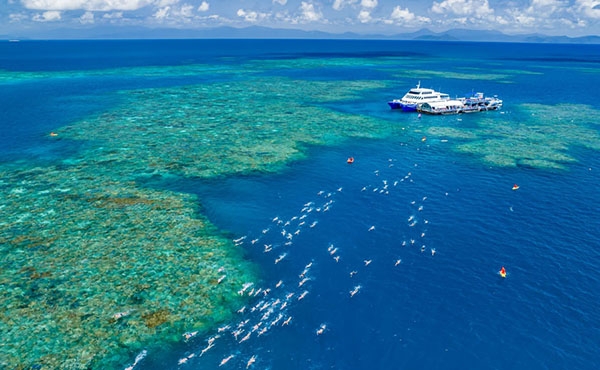Defence activities are well managed (Section 7.3.2) and impacts are generally limited to within training areas, including from conduct of training operations and using live ammunition. Local-scale impacts include pollution, oil spills and leaks, debris from expendable stores, and disruption, injury or death to marine life.1214,1215 Incidents involving the wreckage of military assets, for example, could lead to many of the environmental impacts listed.1216 A series of mitigation measures are in place to minimise the impact defence activities have on the values of the Region and the likelihood of incidents remains rare.
Defence activities are well managed and generally limited to training areas
A range of legacy impacts associated with past defence activities continue in specific areas. Unexploded ordnance (shells, missiles and bombs) and chemical warfare agents that were deliberately dumped at sea at the end of the World War II remain.1217
Firefighting foam containing per- and poly-fluoroalkyl substances (PFAS) was historically used across Department of Defence sites adjacent to the Region. PFAS are a group of thousands of manufactured chemicals used in many common household and industrial products to resist heat, oil, stains and water.
The Department of Defence began phasing out the use of PFAS in 2004. However, these chemicals are environmentally persistent, bioaccumulative and, while not yet shown to cause disease, may have some effect on human health (e.g. cholesterol level elevation, effects on kidney function and hormone levels) and can cause liver toxicity, tumours and reproductive effects in animals.
The PFAS constituents in the firefighting foam are very persistent and mobile and can enter into and migrate in soil and groundwater, eventually moving beyond the source of release, in some cases for several kilometres.1218,1219 Contamination travels in the environment through groundwater. Downstream areas where contamination enters surface water can be widespread, as can the area of impact.1219 Since 2019, a major focus for Defence has been managing the impact to communities from PFAS contamination: investigating where and at what concentration the PFAS contamination is, developing management measures to prevent spreading, and remediating to clean up the source of contamination. PFAS contamination within the Region has been confirmed at RAAF Base Townsville, Lavarack Barracks and HMAS Cairns naval base.1220


